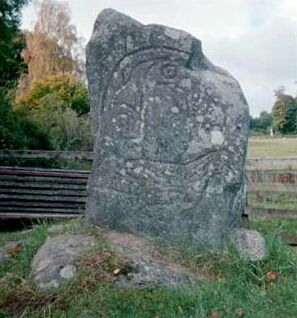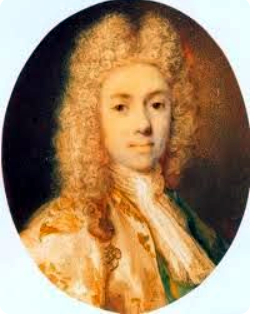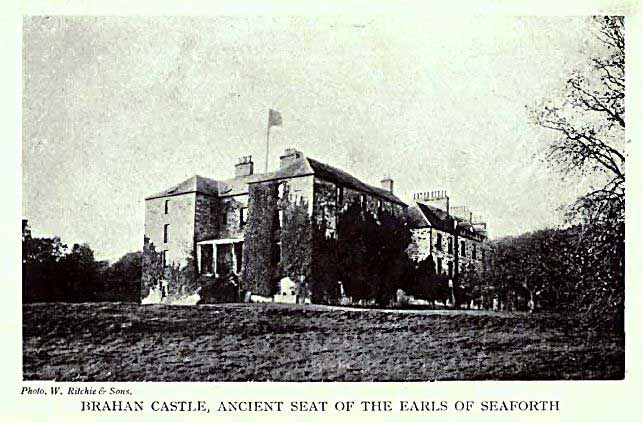|
Sir Robert Munro, 5th Baronet Of Foulis
Sir Robert Munro, 5th Baronet of Foulis (died 11 September 1729) was also 23rd Baron and 26th chief of the Clan Munro. He became blind and was known as the ''Blind Baron''. Member of Parliament Robert Munro was the eldest son of Sir John Munro, 4th Baronet of Foulis. Robert was granted a charter by William III of Great Britain for confirmation of the lands and barony of Foulis, as well as all of his other estates. Robert represented the County of Ross in Parliament from 1697 to 1702. Sir Robert along with many other Munros is amongst the people of Sutherland and Ross who signed an address to George I of Great Britain, in December 1714, imploring his Royal mercy for Simon Fraser, 11th Lord Lovat, chief of the Clan Fraser of Lovat, on his return from France at the instigation of James Fraser of Castle Leathers. 1715 Jacobite rising During the Jacobite rising of 1715, William Mackenzie, 5th Earl of Seaforth led a force of 3000 men which included men from the Clan Mackenzie, ... [...More Info...] [...Related Items...] OR: [Wikipedia] [Google] [Baidu] |
Clan Munro
Clan Munro (; gd, Clann an Rothaich ) is a Highland Scottish clan. Historically the clan was based in Easter Ross in the Scottish Highlands. Traditional origins of the clan give its founder as Donald Munro who came from the north of Ireland and settled in Scotland in the eleventh century, though its true founder may have lived much later. It is also a strong tradition that the Munro chiefs supported Robert the Bruce during the Wars of Scottish Independence. The first proven clan chief on record however is Robert de Munro who died in 1369; his father is mentioned but not named in a number of charters. The clan chiefs originally held land principally at Findon on the Black Isle but exchanged it in 1350 for Estirfowlys. Robert's son Hugh who died in 1425 was the first of the family to be styled " of Foulis", despite which clan genealogies describe him as 9th baron. During the fifteenth and sixteenth centuries the Munros feuded with their neighbors the Clan Mackenzie, and during th ... [...More Info...] [...Related Items...] OR: [Wikipedia] [Google] [Baidu] |
Clan Ross
Clan Ross ( gd, Clann Anndrais ) is a Highland Scottish clan. The original chiefs of the clan were the original Earl of Ross, Earls of Ross. History Origins The first recorded chief of the Clan Ross was Fearchar, Earl of Ross, "Fearcher Mac an t-Sagirt" which in English meant "son of the priest" alluding to his Ó Beólláin descent from the hereditary Abbots of Applecross.Way, George and Squire, Romily. (1994). pp. 308–309. Fearchar helped King Alexander II of Scotland (1214–1249) crush a rebellion by Donald Bane, a rival claimant to the Scottish throne. Fearchar was knighted by the king and by 1234 he was officially recognized with the title of Earl of Ross. The Earl's son, Uilleam I, Earl of Ross, William was abducted in about 1250 in a revolt against the Earl's rule. However, he was rescued with help from the Clan Munro, Munros who were rewarded with lands and who became closely connected with their powerful benefactors. Wars of Scottish Independence During the Wars ... [...More Info...] [...Related Items...] OR: [Wikipedia] [Google] [Baidu] |
Year Of Birth Missing
A year or annus is the orbital period of a planetary body, for example, the Earth, moving in its orbit around the Sun. Due to the Earth's axial tilt, the course of a year sees the passing of the seasons, marked by change in weather, the hours of daylight, and, consequently, vegetation and soil fertility. In temperate and subpolar regions around the planet, four seasons are generally recognized: spring, summer, autumn and winter. In tropical and subtropical regions, several geographical sectors do not present defined seasons; but in the seasonal tropics, the annual wet and dry seasons are recognized and tracked. A calendar year is an approximation of the number of days of the Earth's orbital period, as counted in a given calendar. The Gregorian calendar, or modern calendar, presents its calendar year to be either a common year of 365 days or a leap year of 366 days, as do the Julian calendars. For the Gregorian calendar, the average length of the calendar year (the mea ... [...More Info...] [...Related Items...] OR: [Wikipedia] [Google] [Baidu] |
Sir John Munro, 4th Baronet
Sir John Munro, 4th Baronet of Foulis (died ), 22nd Baron and 25th Scottish clan chief, chief of the Clan Munro, was such a strenuous supporter of Presbyterianism, that, being of a large frame, he was known as "the Presbyterian mortar-piece." Career In the Stuart persecutions, previous to his succession to the title, he had for his adherence to the covenant (Scotland), the covenant, been both fined and imprisoned by the tyrannical government that then ruled Scotland. As John Munro had been fined and imprisoned as a Covenanter, at the Glorious Revolution he naturally took the side of William III of England, William of Orange. In 1661, by a deed dated 23 January, John entered into a Manrent, bond of friendship and manrent with Kenneth Mor Mackenzie, 3rd Earl of Seaforth, chief of MacKenzies. They became bound to each other for themselves and for their friends to live as good neighbours and to assist and defend each other. John is also mentioned in a minute of agreement between Georg ... [...More Info...] [...Related Items...] OR: [Wikipedia] [Google] [Baidu] |
Munro Baronets
There have been three baronetcies created for persons with the surname Munro, one in the Baronetage of Nova Scotia and two in the Baronetage of the United Kingdom. The Munro Baronetcy, of Foulis in the County of Ross, was created in the Baronetage of Nova Scotia on 7 June 1634 for Colonel Hector Monro, with remainder to his heirs male whatsoever. On the death of his son, the second Baronet, in 1651, the male line of the first Baronet failed and the title was inherited by Robert Munro, grandson of George Munro, uncle of the first Baronet. The sixth Baronet represented Tain Burghs in the House of Commons and also fought at the Battle of Fontenoy in 1745. He was killed at the Battle of Falkirk in 1746. The seventh Baronet sat as Member of Parliament for Ross-shire and Tain Burghs. The ninth Baronet fought in the Peninsular War and later commanded a division of the Colombian Army under Simón Bolívar. The eleventh Baronet served as Lord-Lieutenant of Ross and Cromarty from ... [...More Info...] [...Related Items...] OR: [Wikipedia] [Google] [Baidu] |
Resolis
Resolis (from the Scottish Gaelic Ruigh Sholais meaning ''Bright Slope'') is a village and parish on the B9163 road, in the Black Isle in Scotland. It is part of the Presbytery of Ross. In 2011 it had a population of 362. At the 2011 census, the population of the civil parish was 911.Census of Scotland 2011, Table KS101SC – Usually Resident Population, publ. by National Records of Scotland. Web site http://www.scotlandscensus.gov.uk/ retrieved April 2021. See "Standard Outputs", Table KS101SC, Area type: Civil Parish The area of the parish is 12,472 acres. Resolis parish is also a community council A community council is a public representative body in Great Britain. In England they may be statutory parish councils by another name, under the Local Government and Public Involvement in Health Act 2007, or they may be non-statutory bodies. In ... area. Gazetteer for Scotland - www.scottish-places.info/parishes/parmap202.html Retrieved April 2021 Notable People * Rev Hector ... [...More Info...] [...Related Items...] OR: [Wikipedia] [Google] [Baidu] |
George Munro, 1st Of Culcairn
George may refer to: People * George (given name) * George (surname) * George (singer), American-Canadian singer George Nozuka, known by the mononym George * George Washington, First President of the United States * George W. Bush, 43rd President of the United States * George H. W. Bush, 41st President of the United States * George V, King of Great Britain, Ireland, the British Dominions and Emperor of India from 1910-1936 * George VI, King of Great Britain, Ireland, the British Dominions and Emperor of India from 1936-1952 * Prince George of Wales * George Papagheorghe also known as Jorge / GEØRGE * George, stage name of Giorgio Moroder * George Harrison, an English musician and singer-songwriter Places South Africa * George, Western Cape ** George Airport United States * George, Iowa * George, Missouri * George, Washington * George County, Mississippi * George Air Force Base, a former U.S. Air Force base located in California Characters * George (Peppa Pig), a 2-year-old pig ... [...More Info...] [...Related Items...] OR: [Wikipedia] [Google] [Baidu] |
Battle Of Glen Shiel
The Battle of Glen Shiel ( gd, Blàr Ghleann Seile) took place on 10 June 1719 in the West Scottish Highlands, during the 1719 Jacobite Rising. A Jacobite army composed of Highland levies and Spanish marines, was defeated by British troops, reinforced by a Highland Independent Company. The rising was backed by Spain, then engaged in the 1718 to 1720 War of the Quadruple Alliance with Britain. It was intended to support a landing in South-West England, which was cancelled several weeks before; contemporaries on both sides viewed its failure as having fatally damaged the Jacobite cause. Glen Shiel was the only battle of the 1688 to 1746 Jacobite Risings where the Jacobites remained on the defensive, rather than employing the Highland Charge. The battlefield is included in the Inventory of Historic Battlefields in Scotland, and protected by Historic Scotland. The mountain where the action was fought is called Sgurr na Ciste Duibhe; a subsidiary peak named Sgurr nan Spainteach, ... [...More Info...] [...Related Items...] OR: [Wikipedia] [Google] [Baidu] |
Siege Of Inverness (1715)
The siege of Inverness that took place in November 1715 was part of the Jacobite rising of 1715. The town of Inverness and Inverness Castle were being held by the Clan Mackenzie, led by Sir John Mackenzie of Coul who supported the rebel Jacobite cause. Simon Fraser, 11th Lord Lovat, chief of the Clan Fraser of Lovat besieged them, supported by men of the Clan Rose and Clan Forbes. Background Simon Fraser, 11th Lord Lovat had been living in exile with the prospect of his clan and lands being taken over by a Mackenzie who was married to Lady Amelia Fraser of Lovat, daughter of the 9th Lord Lovat and second cousin of Simon.Fraser, Sarah. (2012). pp. 121–146. Upon the outbreak of the Jacobite rising of 1715, Simon Fraser, 11th Lord Lovat returned to Scotland and despite being a staunch Jacobite offered his services to John Campbell, 2nd Duke of Argyll who was in overall command of British forces in Scotland in order to restore himself in Scotland. This would be a severe blow to t ... [...More Info...] [...Related Items...] OR: [Wikipedia] [Google] [Baidu] |
Sheriff Of Ross, Cromarty And Sutherland
The Sheriff of Ross, Cromarty and Sutherland was historically the office responsible for enforcing law and order in Ross-shire, Cromarty and Sutherland, Scotland and bringing criminals to justice. Original known as the office of the Sheriff of Cromarty it became known, following mergers of the Scottish sheriffdoms, as the Sheriff of Ross & Cromarty in 1747 and the Sheriff of Ross, Cromarty & Sutherland in 1870. Following a further merger in 1946 it became the Sheriff of Inverness, Moray, Nairn & Ross & Cromarty. Sheriffs of Cromarty The position of the sheriff of Cromarty was a heritable position. *William de Monte Alto (1266) * William de Monte Alto (1296-1304), (1305-?) * William III, Earl of Ross (c. 1345) *Adam Urquhart (1365) *William Urquhart (c.1470) *Alexander Urquhart (1497) Sheriffs of Ross *1493: Hugh Ross of Balnagowan *1499: David Ross of Balnagowan *1706–1722: Hugh Rose of Kilravock *1725–1729: Sir Robert Munro of Foulis *1729–1732: Hugh Rose, 15th ... [...More Info...] [...Related Items...] OR: [Wikipedia] [Google] [Baidu] |
Robert Munro 5th Bt
The name Robert is an ancient Germanic given name, from Proto-Germanic "fame" and "bright" (''Hrōþiberhtaz''). Compare Old Dutch ''Robrecht'' and Old High German ''Hrodebert'' (a compound of '' Hruod'' ( non, Hróðr) "fame, glory, honour, praise, renown" and ''berht'' "bright, light, shining"). It is the second most frequently used given name of ancient Germanic origin. It is also in use as a surname. Another commonly used form of the name is Rupert. After becoming widely used in Continental Europe it entered England in its Old French form ''Robert'', where an Old English cognate form (''Hrēodbēorht'', ''Hrodberht'', ''Hrēodbēorð'', ''Hrœdbœrð'', ''Hrœdberð'', ''Hrōðberχtŕ'') had existed before the Norman Conquest. The feminine version is Roberta. The Italian, Portuguese, and Spanish form is Roberto. Robert is also a common name in many Germanic languages, including English, German, Dutch, Norwegian, Swedish, Scots, Danish, and Icelandic. It can be u ... [...More Info...] [...Related Items...] OR: [Wikipedia] [Google] [Baidu] |
Brahan Castle
Brahan Castle was situated south-west of Dingwall, in Easter Ross, Highland Scotland. The castle belonged to the Earls of Seaforth, chiefs of the Clan Mackenzie, who dominated the area. History Brahan Castle was built by Colin Mackenzie, 1st Earl of Seaforth in 1611. Kenneth Mackenzie, a labourer on the estate, was a reputed seer who made a number of prophecies in the later 17th century. He is remembered as the Brahan Seer. The Mackenzies were prominent Jacobites, and took part in the Jacobite risings of 1715, 1719 and 1745. The Siege of Brahan took place in November 1715. William Mackenzie, 5th Earl of Seaforth, was attainted, forfeiting the estate, which in 1725 became the headquarters of General Wade during his "pacification" of the Highlands. After the later Jacobite rising of 1745, the Mackenzies were the first clan to surrender, being forced to swear allegiance to the British Crown on the steps of the castle. The estate was later sold back to the Mackenzie family, althou ... [...More Info...] [...Related Items...] OR: [Wikipedia] [Google] [Baidu] |


.jpg)



